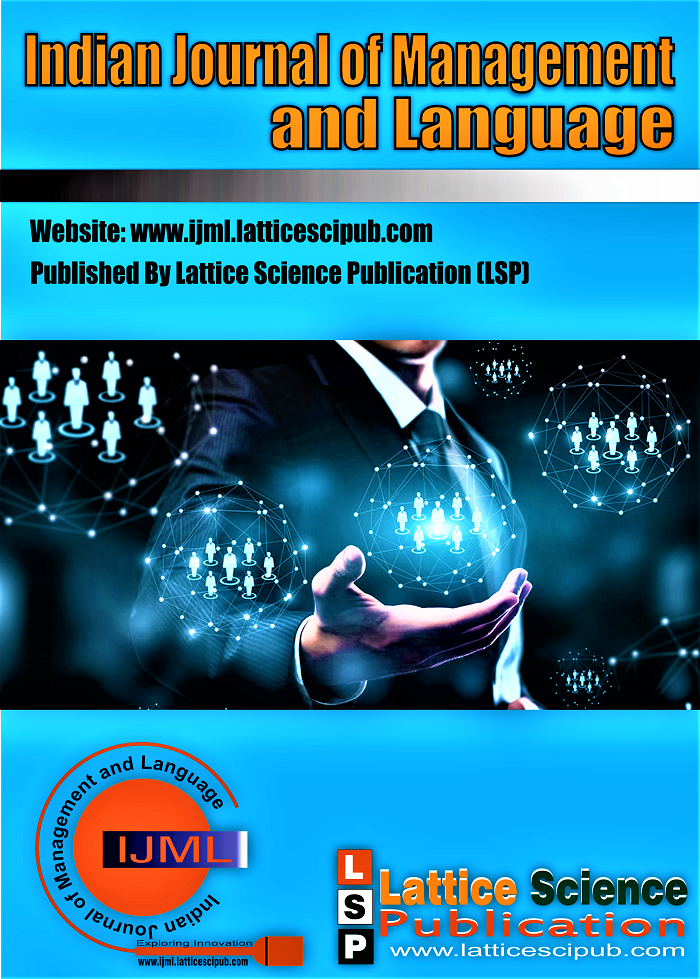Reward Management Strategies and Employee Satisfaction in the Colleges of Kathmandu Valley
Main Article Content
Abstract
Background: Educational institutions set up a reward management system with the hope that it makes the employees perform their activities to the satisfaction of all concerned stakeholders. However, there are many contradictions and complaints about the performance of employees in colleges, compelling the undertaking the studies. Objectives: This study aims to examine the impact of reward management strategies on employee satisfaction in colleges of Kathmandu valley. Methods: This paper uses a questionnaire survey method of 300 respondentsof different 30 colleges/campuses of Kathmandu valley and descriptive statistics and multiple regression models are used to analyze the data. Results: The beta coefficients are positive and significant for promotion, compensation, recognition, learning opportunities, and career development opportunity with employee satisfaction which indicates these variables have a positive impact on employee satisfaction. Conclusion: It is found that reward management is positively related to employee satisfaction and it is a powerful motivational factor that leads to job satisfaction. Implications: College management including universities may focus on identifying better reward management strategies to motivate the employees to enhance better productivity.
Downloads
Article Details

This work is licensed under a Creative Commons Attribution-NonCommercial-NoDerivatives 4.0 International License.
How to Cite
References
Akhtar, C. S., Aamir, A., Khurshid, M. A., Abro, M. M. Q., & Hussain, J. (2015). Total reward and retention: A case study of higher education institutions in Pakistan. Procedia – Social and Behavioral Sciences, 210, 251-259. [CrossRef]
Akhtar, U., & Md, S. M. (2013). The impact of rewards on job satisfaction and employees’ performance in Bangladesh: A comparative analysis between pharmaceutical and insurance industries. International Journal of Business and Management Invention,2(8), 01-08.
Ali, R., & Ahmed, M. S. (2009). The impact of reward and recognition programs on employee’s motivation and satisfaction: an empirical study. International Review of Business Research Papers, 5(4), 270-279.
Amah, E., Nwuche, C.,&Chukwuigwe, N. (2013). Effective reward and incentive scheme for effective organizations. Research Journal of Finance and Accounting,4(3), 73 79.
Arokiasamy, A.R.A.,Tat, H.H., &Abdullah, A. G. K.(2013). The effects of the reward system and motivation on job satisfaction: Evidence from the education industry in Malaysia. World Applied Sciences Journal, 24(12), 1597-1604.
Baniya, L. B. (2004). Human resource development practice in Nepalese business organization. A case study of manufacturing enterprises in Pokhara. Journal of Nepalese Business Studies, 1(1), 58-68. [CrossRef]
Chepkwony, C. C.,&Oloko, M. (2014). The relationship between rewards systems and job satisfaction:A case study at teachers’ service commission-Kenya. European Journal of Business and Management, 3(1), 59-70.
Danish, R. Q., Qaseem, S., Mehmood, T., Ali, Q. M., Ali, H. F., & Shahid, R. (2019). Work-related stressors and teachers’ performance: Evidence from college teachers working in Punjab. European Scientific Journal, 15(4), 158-173. [CrossRef]
Emuron, L. (2020). Progressive reward management system model for university governance. International Journal of Advanced Research and Publications, 4(4), 129-138.
Freedman, M. S. (1978). Some determinants of compensation decisions.Academy of Management,21, 397-409. [CrossRef]
Galletta, M., Portoghese,I.,&Battistelli, A.(2011). Intrinsic motivation, job autonomy, and turnover intention in the Italian healthcare: The mediating role of affective commitment. Journal of Management Research, 3(2), 1-15. [CrossRef]
Gilbert, J. A., & Ivancevich, J. M. (2000). Valuing diversity: A tale of two organizations. The Academy of Management Executive, 14(1), 93-105. [CrossRef]
Gyawali, A. (2016). Impact of reward on employee motivation of Nepalese commercial banks. Nepalese Journal of Management, 3(3), 163-175.
Haider, M., Aamir, A., Abdulhamid, A., & Hashim, M. (2015). A literature analysis of the importance of non-financial rewards for employees, job satisfaction. Abasyn Journal of Social Sciences, 8(2), 341- 351.
Jiang, Z., Xiao, Q., & Xiao, L. (2009). Total rewards strategy: A human resources management strategy going with the trend of the times. International Journal of Business and Management, 4 (11), 177-184. [CrossRef]
Khan, A. H., Nawaz, M. M., Aleem, M., & Hamed, W. (2012). Impact of job satisfaction on employee performance: An empirical study of autonomous medical institutions of Pakistan. African Journal of Business Management, 6(7), 2697-2705.
Mee-Edoiye, M.E. (2015). The impact of the reward system on the productivity of construction employees. A study of selected construction projects in Port Harcourt. Journal of Public Economics, 6(7), 217-219.
Mohammed, R. A. (2016). Influence of intrinsic and extrinsic rewards on employee performance: The banking sector of Pakistan. Academic Research International Journal, 4(1), 1-29.
Okpara, J. O. (2004). The impact of salary differential on managerial job satisfaction: A study of the gender gap and its implications for management education and practice in a developing economy. Journal of Business in Developing Nations, 8(1), 65-91.
Rashmi, R., & Umesh, M. (2017). Impact of rewards on employee performance. A case of Indian Oil Corporation. Journal of Business and Management, 16(2), 29-36.
Schuler, R.S., & Jackson, S. E. (2005). Human Resource Management: Positioning for the 21st Century.(6th Ed.). New York: West Publishing. 22. Torlak, N. G., &Kuzey, C. (2019). Leadership, job satisfaction, and performance links in private education institutes of Pakistan. International Journal of Productivity and Performance Management, 68(2), 276-295. [CrossRef]
Tella, A., &Ibinaiye, O. A. (2020). Correlates of staffs motivation, satisfaction, and job performance of library staffs in selected Nigerian University libraries. International Information & Library Review, 52(1), 32-49. [CrossRef]
Tessema, M.,&Soeters, J. (2006). Challenges and prospects of HRM in developing countries: Testing the HRM performance link in Eritrean civil service. International Journal of Human Resource Management. 17(1), 86-105[CrossRef]
Thapa, N. (2016). Impact of training and motivation on employees’ performance in Nepalese commercial banks. Nepalese Journal of Business, 3(4), 78-91.





